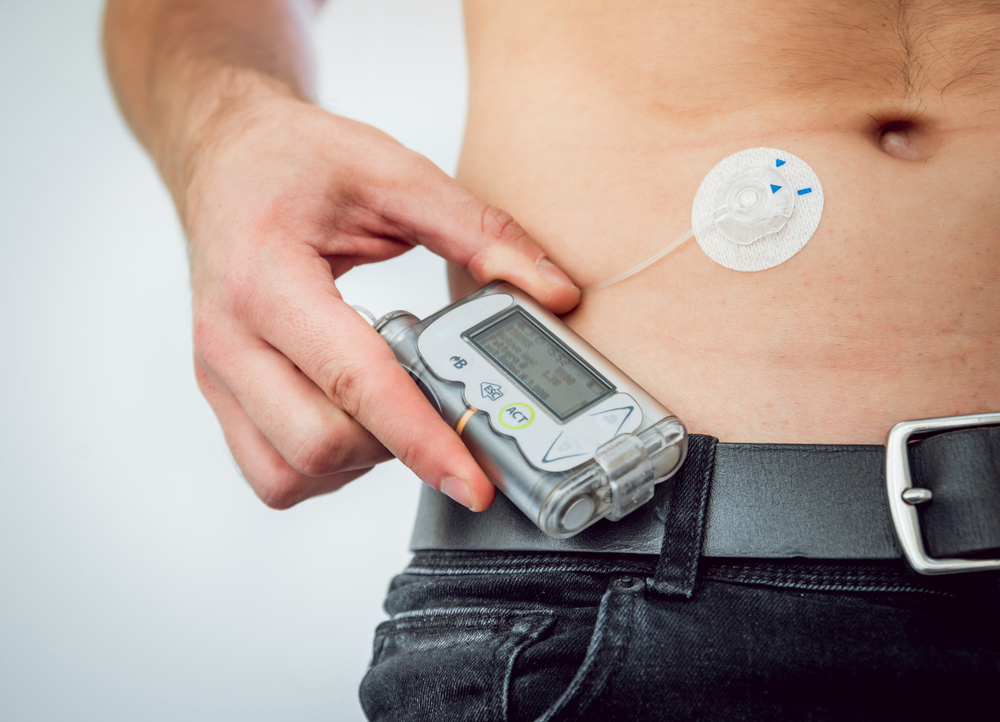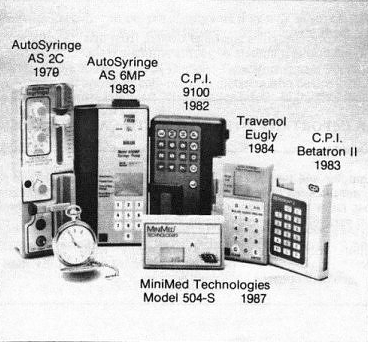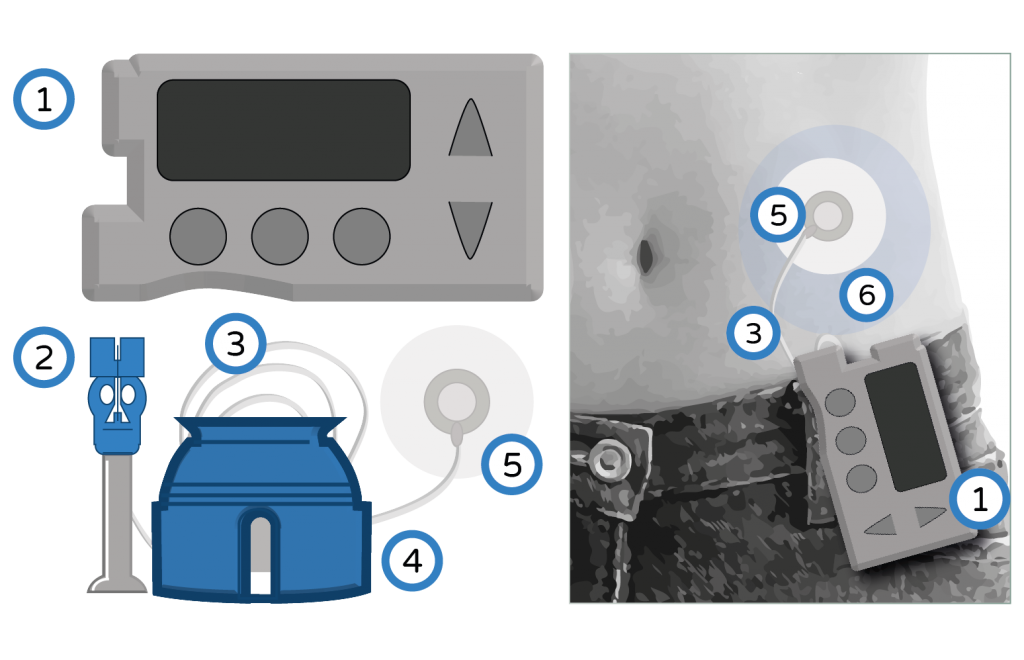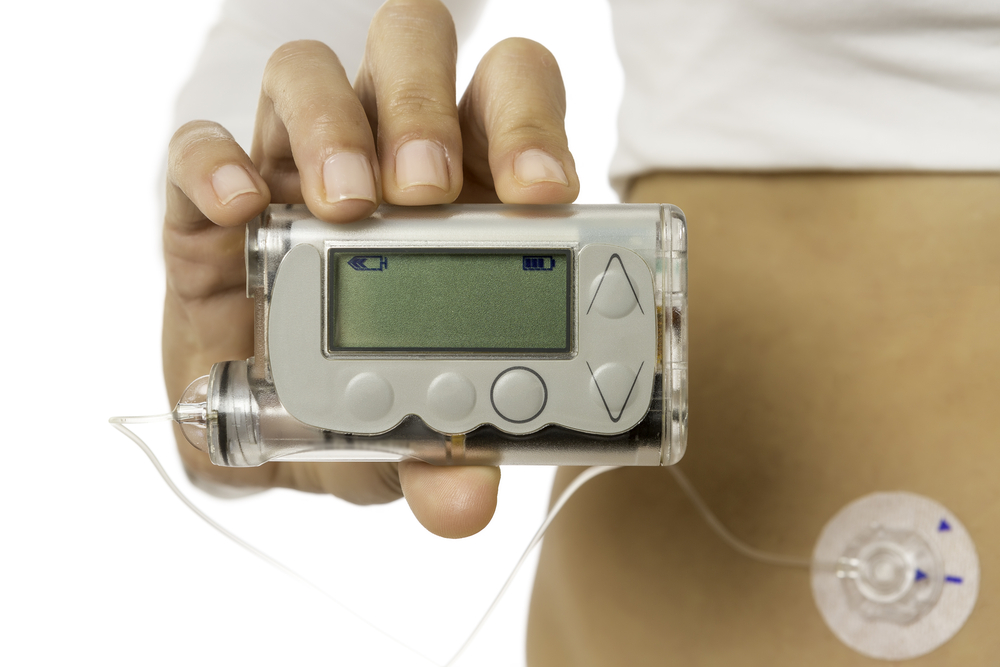An introduction to insulin pump therapy

Pump therapy aims to mimic the pattern of insulin release that is seen in someone without diabetes. You may already be using what is known as a basal bolus insulin regimen with insulin pens.
In a ‘basal bolus’ regimen:
- A long-acting insulin analogue is injected once or twice daily over a 24 hour period. This is the basal (or background) insulin.
- A bolus of quick-acting insulin analogue is injected approximately 10 minutes before, during, or after a meal.

Insulin pumps only use rapid-acting insulin which is administered continually, the rate of which can be adjusted at any time. There is no need to use a long-acting insulin analogue. Bolus doses will continue to be administered (through the bolus function on the pump) when food is taken.
The pump is programmed to deliver continuous specific basal rates to match your own requirements. You can increase or decrease the level of insulin for various reasons such as during exercise, or illness.
How does an insulin pump work?
Insulin pump therapy delivers insulin into the body using the following components:
- Insulin pump: a small battery-powered device with a screen and buttons to programme your insulin doses.
- Reservoir: a plastic cartridge containing insulin that is inserted into your insulin pump.
- Flexible tubing: for insulin delivery, this tubing runs between your reservoir and your infusion set.
- Infusion set insertion device: for quick and easy set-up of your infusion set.
- Infusion set: this is where insulin is delivered into the body. A small tube called a cannula is inserted here which is held in place and changed every 2–3 days maximum.
- Insulin enters the blood stream

The theory behind insulin pump therapy
The aim of the insulin pump is to mimic the pancreas. In people without diabetes, the pancreas continuously releases a low level of insulin throughout the day and night (known as basal insulin), with boosts of insulin released at mealtimes (known as bolus insulin). The pump uses quick-acting insulin (called analogue insulin) such as Novorapid, Humalog, and Apidra.

The pump is pre-programmed to deliver a low level of basal insulin continuously throughout the day. The speed of insulin delivery may be programmed to differ at different times of the day and can be altered to match your activity levels.
Your diabetes team will provide information on assessing and setting your basal rate(s). In addition, a bolus dose of insulin is delivered by pressing buttons on the pump to cover carbohydrates in food eaten or to give a correction if the blood glucose is high.
There are some insulin pumps that do not use tubing, e.g. Omnipod pumps. We will look at these in more detail next.



Leave a Reply
You must be logged in to post a comment.